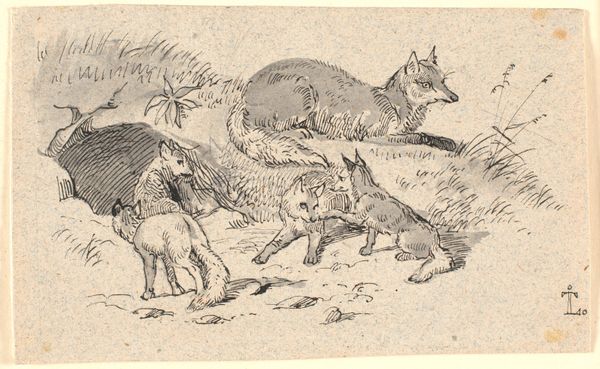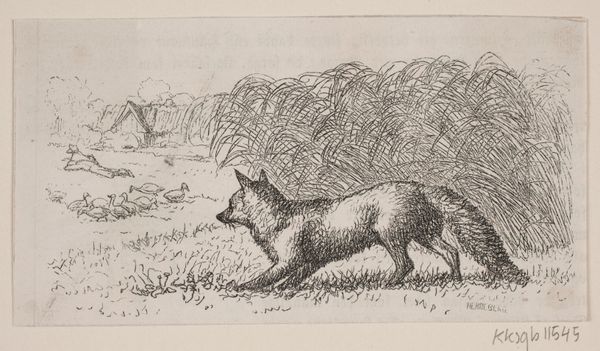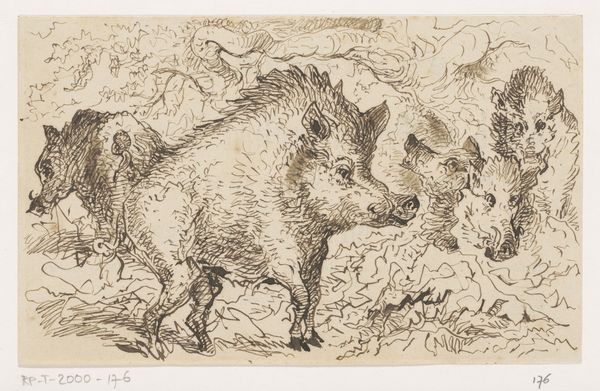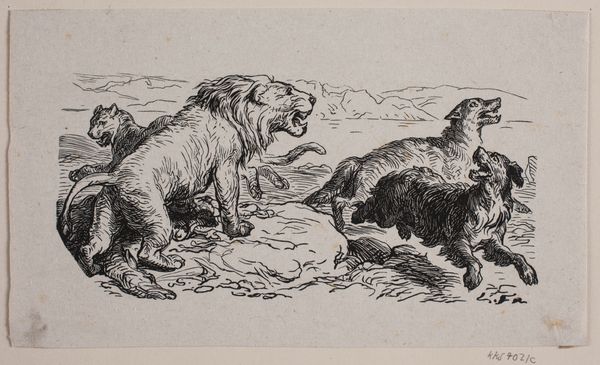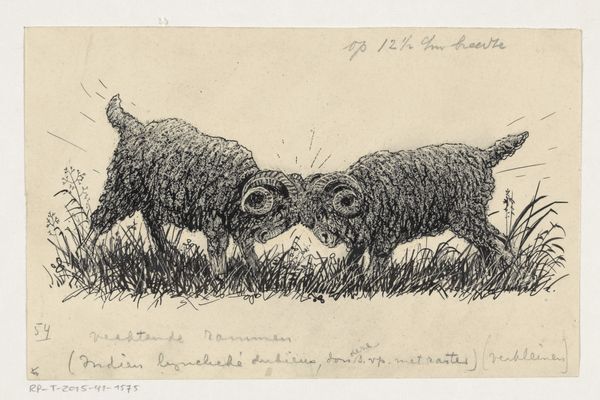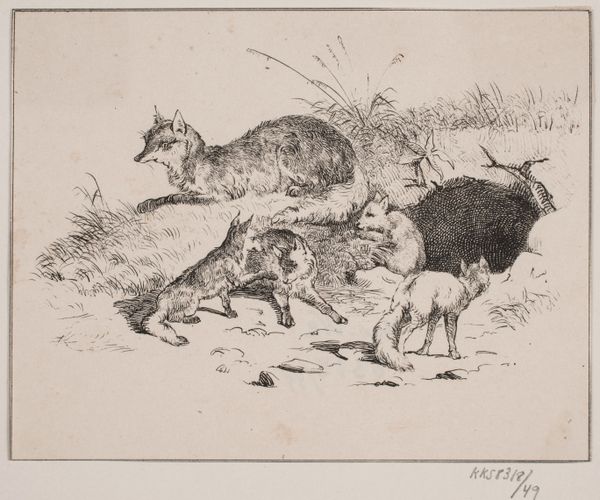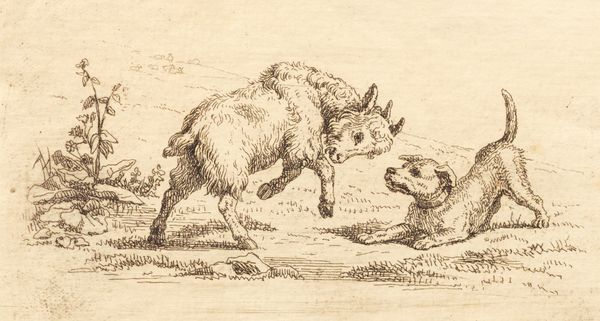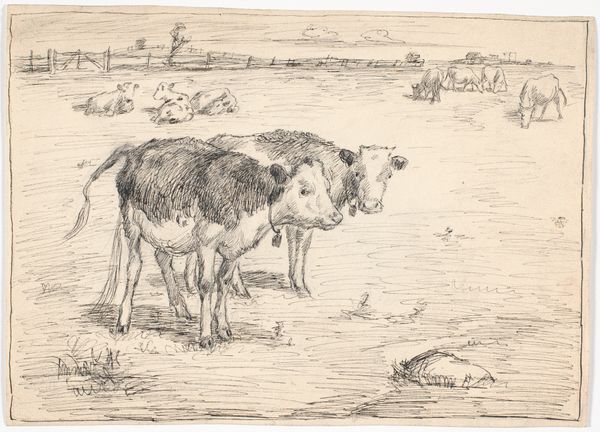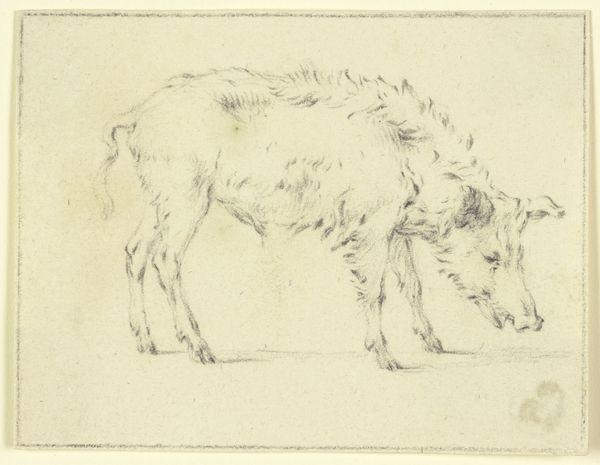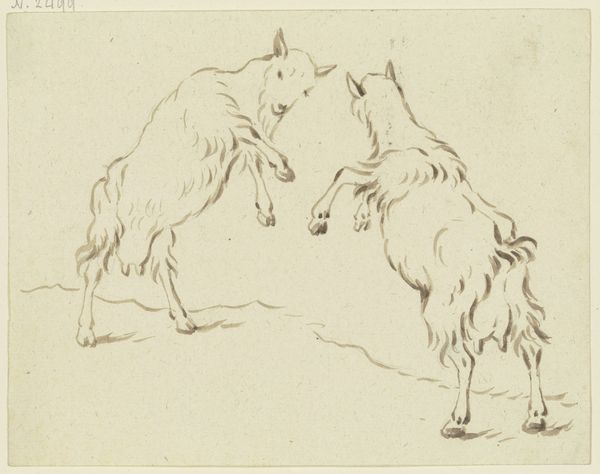
drawing, ink, pen
#
drawing
#
animal
#
pencil sketch
#
landscape
#
ink
#
pen
#
naturalism
#
realism
Dimensions: height 84 mm, width 106 mm
Copyright: Rijks Museum: Open Domain
Editor: Here we have *Wild Boar* by Johannes Tavenraat, sometime between 1840 and 1880, done in pen, ink, and pencil. I find the sketchiness intriguing, especially the focused detail on the boars’ faces, making them almost…portraits. What stands out to you in terms of its historical and cultural implications? Curator: It's interesting you call them portraits. Naturalism in the 19th century often served specific cultural purposes. How does this representation of boars challenge or reinforce societal perceptions of the natural world at that time? Editor: Well, I guess at that time, landscape and animal depictions were becoming more popular and accessible, weren't they? It feels…less heroic than other paintings in the museum. More documentary almost? Curator: Precisely. Think about the emerging middle class, the growth of cities, and a corresponding nostalgia for rural life. What role do you think depictions of wildlife, like these boars, played in constructing an idea of “nature” for urban audiences? Editor: So, these drawings become a kind of stand-in for direct experience. But these are wild animals, so it suggests a safe distance? Curator: Exactly! Consider the institutions exhibiting works like these, like the Rijksmuseum itself. How does the act of placing nature, or a representation of nature, within the confines of a museum shape its meaning and reinforce power structures? Is it promoting the beauty of the landscape, or something else entirely? Editor: That’s a great point. I hadn’t considered how the very act of display is a statement. Curator: And that is precisely what makes looking at art through a historical lens so illuminating. Editor: Thanks, I’m seeing this seemingly simple sketch with new eyes now.
Comments
No comments
Be the first to comment and join the conversation on the ultimate creative platform.
